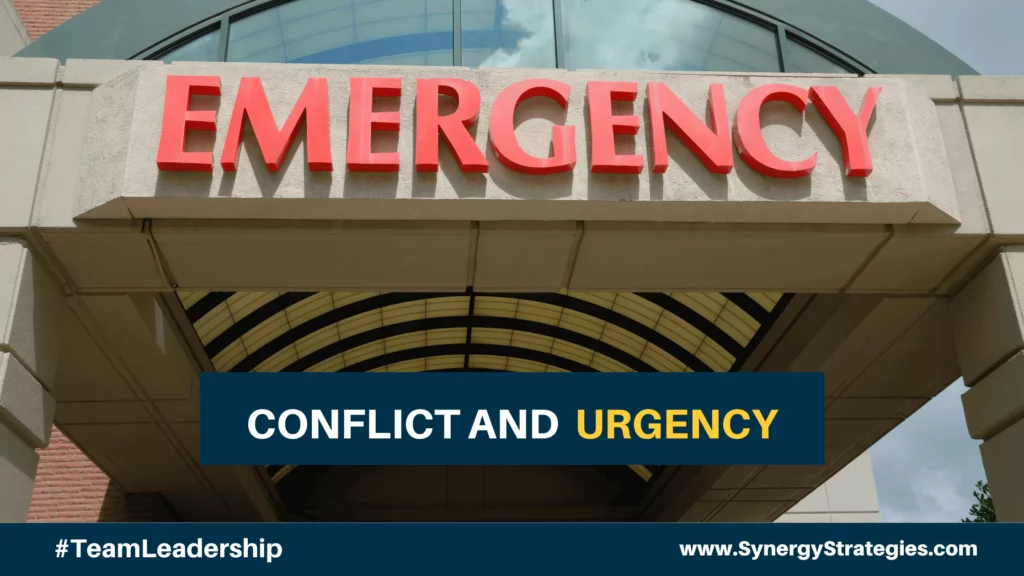Generally, there are few people in the world who enjoy conflict. While there are those profiles that are truth-tellers, movers and shakers, etc. that will frequently get into conflict to move things forward, many of those people do not “enjoy” conflict. Conflict happens for different reasons. There are numerous great books to help in the art and navigation of conflict. A few of my favorites are:
-
- Never Split the Difference by Chris Voss
- Crucial Conversations by K. Patterson, J. Grenny, R. Mcmillan, and A. Switzler
- Crucial Accountability (initially published as Crucial Confrontations) by K. Patterson, J. Grenny, R. Mcmillan, and A. Switzler
- Conversational Intelligence By Judith Glasser
There are many reasons conflict happens. Understanding these reasons can help us to divert the conflict and rather engage in solutions.
#1) Identify the problem.
People tend to get defensive in conflict; buffering feelings of shame, attack, being made wrong, and more. While sometimes that is happening, often, the conflict is coming from a tension between identifying, owning, and solving a problem. In today’s world, there is a squishiness to calling things, even a problem, under the reframes of seeing opportunities. But, sometimes a spade just needs to be called a spade. I believe if you can’t identify and acknowledge what is not working, you really can’t solve that problem. Many people believe in the concept to “not fix what isn’t broken”, taking them off the hook for anything that isn’t a broken/problem. Others struggle so much with ego fragileness, they are unable to recognize, much less own, when something is not working (i.e. a problem).
When we as a team, can collectively recognize and acknowledge a problem. THEN we have an opportunity on our hands. Now we can better assess what is not working and take steps to change, adapt and create new approaches. Before that, we are stuck in insanity (doing the same thing and expecting different results) while we massage our ego and offer excuses of why the problem exists in the first place. We focus more on why we are not responsible.
Real leaders allow the buck to stop with them. If something is not working, they own it by naming it (this is not working), identifying it (what is not working), and taking responsibility to try something different. They co-design accountability of who will do what, by when, and how we will know. It is clear and there is a plan. If something needs to be changed in the plan, communication happens to renegotiate the terms (not when the deadline is missed but before it becomes clear the deadline or activity is having a problem). To do this people have to be able to set their egos aside and fail forward. Be unattached. Realize failing forward is how progress happens. It is not about perfection; it is about movement and working to make it better.
#2) Agree on the Urgency.
The next part, when leaders often find themselves in conflict but get confused, is the urgency in which we solve problems. Often when we have agreed on a problem and course of action, we think that is the end of the conversation. Really this is the start of frustration if the urgency is also not agreed upon. I like to think about the urgency in the same way it is helpful to report the status of tasks. The green-yellow-red light system that is more commonly applied to task status can be applied to setting urgency for a problem being solved. This system helps to make sure everyone is on the same page. This has to do with the speed of execution and the urgency and attention leaders hold on the “problem”.
-
- GREEN – the task is on track and moving forward; the problem is identified and taking action will address it. Leaders can be more passive and a regular check-up on the situation is a healthy check and balance.
- YELLOW – the task is partially on track but has some issues that could jeopardize its success; the problem is identified, and a plan is made but there are vulnerabilities and sensitives that require close attention and work to ensure this problem doesn’t go south and get off track. Leaders must be more engaged and create some additional structures, supports, and activities to ensure this doesn’t move to RED and gets back to GREEN ASAP.
- RED – the task is off track, there is a barrier or problem blocking the ability to have it done; the problem is identified, and a plan is in place but there are numerous roadblocks and issues that will need to be addressed at the same time. Leaders must be vigilant with accountability and alertness to the situation, running ahead to remove obstacles and roadblocks so the team can execute with as few barriers as possible. Usually, RED situations require more people to work together interchangeably versus in green and yellow status, people can work more at their own pace and space (less inter-accountably).
- RED-RED – the task is urgently off track and unless the team works together to get it back on track it could be detrimental for the organization and cause new issues. The problem is identified and a plan is in place however given the severity, all hands on deck are needed to urgently and swiftly get things turned around given the number of items involved, complexity, and interconnections. Otherwise, it would be detrimental for the company and could sabotage the identified problem and plan because breaking is happening faster than fixing. (i.e. fire drill – working on numerous things at one time to get back to a regular state of activity). RED-RED urgency is one where a leadership team has their eyes and ears on the situation and many hands are working to deploy a swift and multifaceted plan to quickly shift from a crash and burn state to a healthy level again.
If one leader is in a RED-RED state and others are not, there will be conflict. The high alert leader will be moving quickly and fiercely as if the house is on fire, while those in a YELLOW or GREEN state will be more in their normal mode. It creates intense conflict, judgment, and impasse as leaders wrestle over priorities and speed of execution. When a team can identify the problem, design solutions, and then assess the level of urgency… the initial plan often needs some adjustment or adjacent planning. When everyone is running on the same level it helps to assess how fast, how often, to what degree.
Leaders must watch out for ego again here. Top leaders can often minimize a level of urgency because it is hard to acknowledge that a problem can be “that” bad. Top leaders are known to extend more passes and whatever the real level is, they tend to see it one or two levels better than it is. There are a few reasons, including not being in the trench, not wanting to hear that tough truth because usually there is some leadership failure to come to terms with, not knowing what to do, feeling compassion and understanding for people, and not wanting to push them too hard out of fear of losing them, not being liked, or seeming too demanding or not understanding.
It is good when identifying problems to assess what level of urgency is this problem? Given that level of urgency, is this plan enough? What else could be done? If we did it faster – what would that cost or would it make anything worse? If we did it slower – what would that cost or what would it make worse? Leaders must constantly step back from their ego to be able to objectively see issues AND opportunities, solutions, and options. When leaders are unattached from their ego and the ego of their team, they are able to boldly speak the truth, identify problems that might be growing intensity, and co-design plans, strategies, and solutions to a better and more healthy course.






